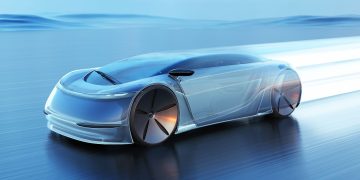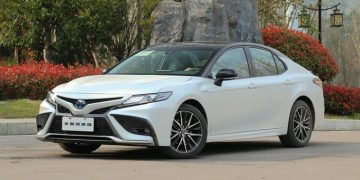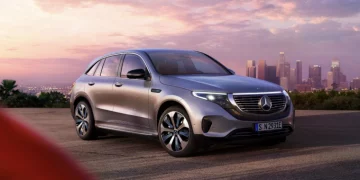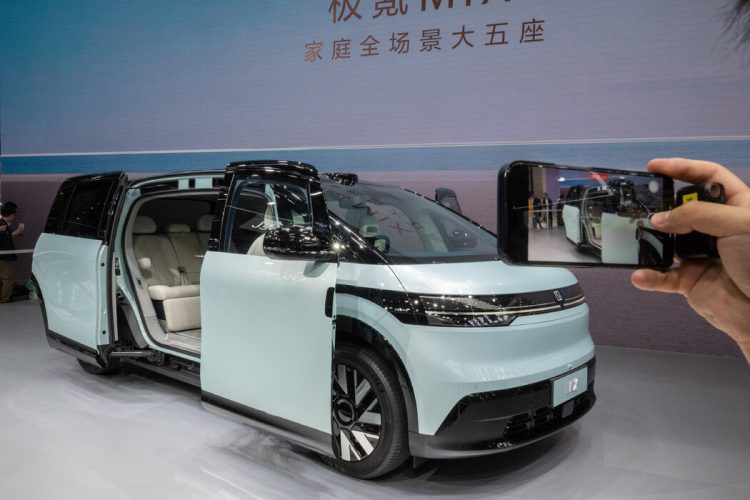Introduction: The Role of Combustion Engine Bans in the EV Transition
As the world grapples with the pressing issues of climate change and air pollution, governments and policymakers are adopting increasingly aggressive strategies to transition to more sustainable forms of transportation. One of the most significant moves in this shift is the introduction of policies to ban the sale of new internal combustion engine (ICE) vehicles. These policies are being implemented in various regions, with the European Union, the United Kingdom, and some individual countries like Norway setting ambitious timelines to phase out combustion engines in favor of electric vehicles (EVs). This article explores how such policies might accelerate the global shift towards electric vehicles, analyzing their potential impact on the automotive market, consumers, and the environment.
The Global Move Toward Banning Combustion Engines
1. Why Are Governments Moving to Ban Combustion Engines?
The global shift to electric vehicles is driven by a range of concerns, including reducing carbon emissions, improving air quality, and mitigating the impacts of climate change. Internal combustion engine vehicles are a major contributor to greenhouse gas emissions and air pollution, particularly in urban areas. As countries seek to meet international climate targets such as those outlined in the Paris Agreement, the transportation sector — responsible for a significant portion of global carbon emissions — has become a focal point of regulatory action.
By imposing bans on the sale of new combustion engine vehicles, governments aim to reduce the number of polluting cars on the road, ultimately contributing to cleaner air and a reduction in global carbon emissions. These policies serve as a strong signal to consumers and manufacturers that the future of transportation is electric.
2. Global Examples of Combustion Engine Bans
Several countries have already announced plans to ban the sale of new petrol and diesel cars in the coming decades. For instance:
- United Kingdom: In November 2020, the UK government brought forward its target to ban the sale of new petrol and diesel cars from 2040 to 2030. This ambitious move was a part of the UK’s broader strategy to reduce carbon emissions and achieve net-zero emissions by 2050.
- European Union: The European Commission is also pushing for a significant reduction in car emissions. By 2035, the EU aims to have zero-emission vehicles account for 100% of new car sales, signaling a dramatic shift in the market.
- Norway: Norway has been a pioneer in promoting electric vehicles. It is aiming to ban the sale of new combustion engine vehicles by 2025, making it the first country to set such an aggressive timeline. This policy has already led to a significant increase in EV market share in the country.
Other countries, including the Netherlands, France, and Canada, have set similar targets, with varying timelines for phasing out ICE vehicles. These bans are not only about reducing carbon emissions; they are also about promoting the development of cleaner, more efficient technologies that can support the global transition to sustainable transportation.
The Impact of Combustion Engine Bans on the EV Market
1. Increased Demand for Electric Vehicles
The introduction of policies to ban combustion engine vehicles has already started to drive the demand for electric vehicles. Consumers, aware of the impending bans and the phasing out of ICE vehicles, are more likely to consider purchasing an EV before the regulations take full effect. As these bans draw nearer, EV adoption is expected to accelerate, with more consumers making the switch to electric cars.
In countries like Norway, where the sale of new petrol and diesel cars is already banned, EVs now account for over half of all new car sales. The same trend is expected to emerge in other countries as their ban policies come into play. By providing a clear timeline for the phase-out of combustion engines, governments are giving consumers the certainty they need to invest in EVs.
2. Shifting Manufacturer Strategies
As government policies shift towards banning combustion engine vehicles, automakers are beginning to adjust their production strategies to align with these new realities. Major car manufacturers such as Volkswagen, General Motors, and Ford have already announced plans to electrify their fleets, with some promising to shift to producing only electric vehicles by 2030 or 2035.
This shift has spurred significant investment in electric vehicle technology, including the development of new battery technologies, improved manufacturing processes, and the expansion of EV models across different segments. As more automakers embrace electric vehicles, the market will become increasingly competitive, leading to more affordable and diverse EV options for consumers.
3. Technological Advancements and Innovation
The push for electric vehicles has spurred rapid advancements in technology, particularly in the areas of battery development, range, and charging infrastructure. As automakers and technology companies race to meet the growing demand for EVs, innovations in battery chemistry, fast charging technologies, and vehicle design are likely to emerge, further enhancing the appeal of electric vehicles.
For instance, improvements in battery technology are expected to result in lower costs and higher energy densities, extending the range of EVs and reducing charging times. Additionally, innovations in solid-state batteries, which offer higher energy densities and enhanced safety features, are likely to accelerate the transition to electric vehicles.
The development of ultra-fast charging infrastructure and wireless charging technologies will also address one of the major barriers to EV adoption: range anxiety. With advancements in charging infrastructure, consumers will be able to charge their EVs more quickly and conveniently, making electric vehicles more practical for everyday use.

The Environmental Impact of Combustion Engine Bans
1. Reducing Carbon Emissions
One of the most significant benefits of banning combustion engine vehicles is the reduction in carbon emissions. According to the International Energy Agency (IEA), road transport accounts for nearly 20% of global CO2 emissions, with cars and trucks being the primary contributors. By transitioning to electric vehicles, which produce zero tailpipe emissions, governments can significantly reduce emissions from the transportation sector.
The environmental benefits of EVs go beyond just CO2 emissions. Electric vehicles are also quieter, reducing noise pollution in urban areas. They also have lower levels of particulate matter and other harmful pollutants compared to their combustion engine counterparts, which can lead to improved air quality in cities and reduced health risks associated with pollution.
However, it is important to note that the environmental benefits of electric vehicles are contingent on the energy mix used to power them. In countries where electricity is primarily generated from renewable sources, the environmental benefits of EVs are maximized. On the other hand, in regions that rely heavily on coal or other fossil fuels for electricity generation, the environmental impact of EVs may be less significant. Thus, the transition to EVs must go hand-in-hand with efforts to decarbonize the energy sector.
2. Reducing Dependence on Fossil Fuels
Banning combustion engine vehicles is also an important step in reducing dependence on fossil fuels. Gasoline and diesel vehicles are major consumers of oil, and by shifting to electric vehicles, countries can reduce their reliance on imported oil and improve energy security. This shift is particularly important for nations that are heavily dependent on oil imports, as it reduces their vulnerability to fluctuations in global oil prices and strengthens their domestic energy infrastructure.
Electric vehicles, when powered by renewable energy sources, can help reduce the demand for fossil fuels, contributing to global efforts to decarbonize the economy. Additionally, as the world moves toward a more decentralized energy grid with renewable sources like solar and wind, electric vehicles can act as mobile energy storage units, providing a new opportunity for integrating renewable energy into the grid.
The Challenges of Implementing Combustion Engine Bans
1. Infrastructure Development
One of the major challenges of implementing combustion engine bans is the need to expand charging infrastructure. While Europe and other regions have made significant strides in building EV charging networks, there is still a need for greater coverage, particularly in rural areas and developing countries. Governments and private companies must work together to ensure that charging infrastructure is widely accessible, and that it is fast, reliable, and affordable for consumers.
2. Battery Production and Supply Chain Issues
The transition to electric vehicles also faces challenges related to battery production. The demand for lithium-ion batteries is expected to surge as more consumers adopt EVs, which could strain global supply chains and lead to resource shortages. To address these challenges, governments and automakers must work to establish a sustainable supply of raw materials for battery production, as well as invest in recycling technologies to reduce the environmental impact of battery manufacturing.
3. Cost and Affordability
Although the cost of electric vehicles has been decreasing, they are still generally more expensive than their combustion engine counterparts, primarily due to the high cost of batteries. While financial incentives and subsidies can help reduce the upfront cost of EVs, the transition to electric vehicles must also address issues of affordability to ensure that EVs are accessible to all consumers, not just those with higher incomes.
Conclusion: Accelerating the Electric Vehicle Transition Through Policy
Policies aimed at banning the sale of internal combustion engine vehicles have the potential to significantly accelerate the global shift to electric vehicles. By providing a clear roadmap for the phase-out of combustion engines, governments are signaling to consumers and manufacturers that the future of transportation is electric. These policies are already driving demand for EVs, fostering innovation in vehicle technology, and reducing carbon emissions.
However, the transition is not without challenges. Governments must address issues related to infrastructure, supply chains, and affordability to ensure the success of these policies. If these challenges can be overcome, the widespread adoption of electric vehicles will be a critical step in achieving global sustainability goals and reducing reliance on fossil fuels.











































